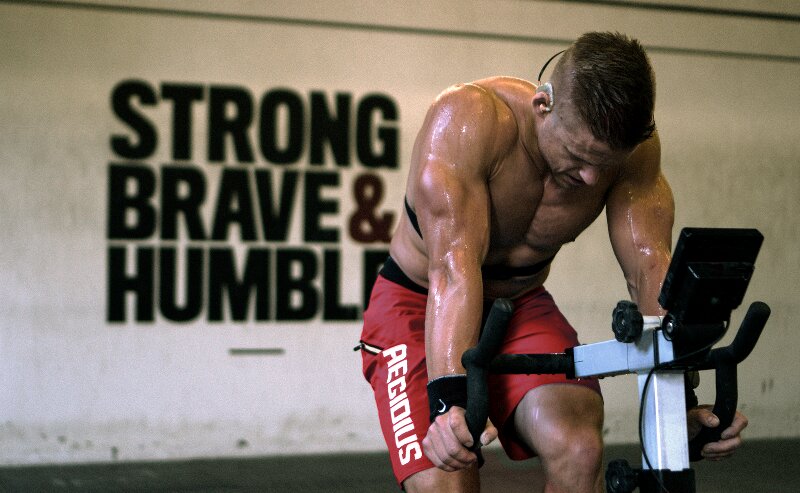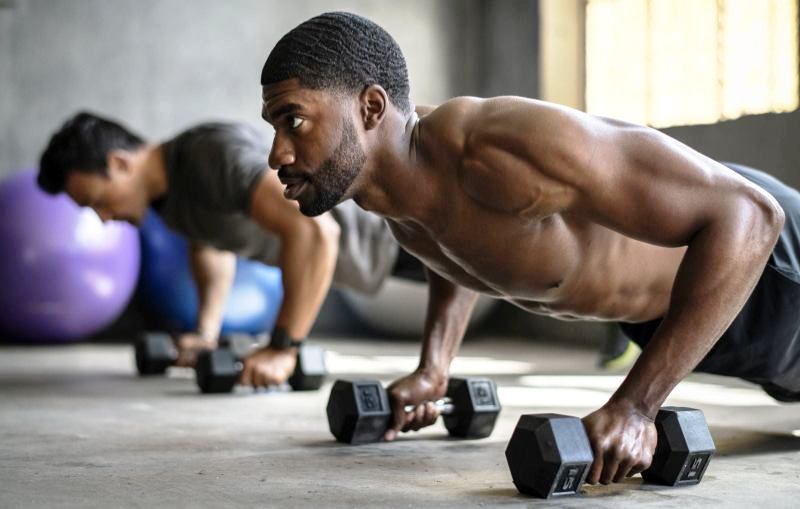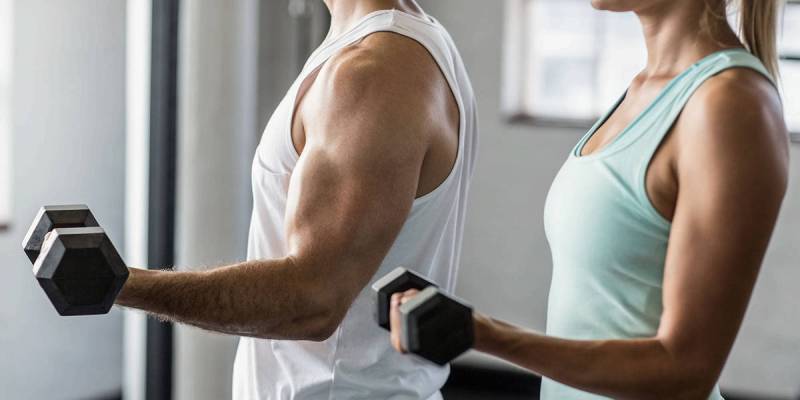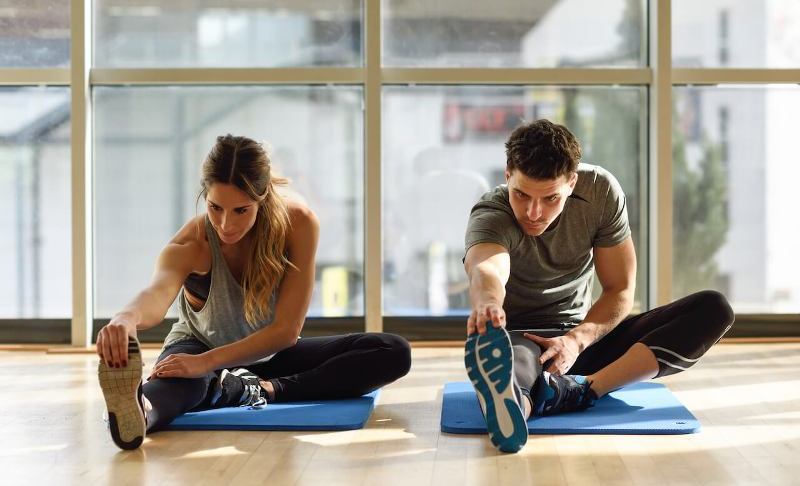One should recognize the reality that benefits come with prioritizing physical fitness. The American College for Sports Medicine (ACSM) presents a road map for achieving fitness by managing a well-balanced workout routine.
A fitness routine is incomplete without a healthy diet, regular exercise and good sleep. In fact, exercise alone does not make you fit. If you think so, then you are wrong. It is the combination of all these health-related components of fitness that work together to make you fit and healthy.
This blog post will talk about these five components of physical fitness and also discuss how fitness can be achieved.
1. Cardiovascular Endurance:

It is also known as aerobic fitness or cardiorespiratory endurance. It refers to the efficient oxygen intake and delivering it to the tissues of the body.
Cardiovascular endurance is the ability of a person’s heart and lungs to supply oxygen to their muscles. It is the ability of an individual to perform aerobic activities for extended periods of time.
Cardiovascular endurance is a component of fitness that has benefits far beyond physical health.
The purpose of cardiovascular endurance training is to improve the capacity of the heart and lungs for delivering oxygenated blood throughout your body, thus improving aerobic capability at any given level of exertion.
Regular exercise can:
- Boost cellular metabolism
- Deliver physical encounters
- Enhance the uptake of oxygen by the body.
Given that heart disease accounts for roughly 630,000 deaths in the United States each year, starting a workout program that enhances cardiovascular fitness is of particular importance.
Running, walking, cycling, swimming, dancing, circuit training, and boxing are just a few of the many workouts designed to benefit heart health. The key to it is consistency.
While many people believe that cardiovascular endurance is only achieved through long-distance running or other cardio-related activities, there are actually ways you can increase your cardiovascular endurance without leaving home. Let’s say, you can exercise such as Jump rope, a cardio exercise that is highly effective.
By incorporating a few simple steps into your workout routine, you can achieve greater levels of cardiovascular endurance in no time at all.
2. Muscular Endurance:

It is a contributor to muscular health. Continuously peddling a bike develops resistance in the legs and glute muscles. It is an instance of high-level endurance.
It’s important to recognize that muscular endurance is a component of fitness. It isn’t the same as cardiovascular endurance, which is the ability of your heart, lungs and circulatory system to deliver oxygen to your working muscles.
Plank holding is another cited example of muscular endurance. The longer you hold the greater you have endurance. The extent of muscular endurance is directly related to health goals.
- For Everyday Health: Endurance can be built by routine health activities. Just climb upstairs, carry groceries, and bear the weight of low intensity.
- For Fitness Related Goals: For becoming a competitor in sports, opt for continual muscle contraction i.e. CrossFit, cycling, obstacle races and many more.
The amount of muscular endurance you need depends on what type of sport or activity you participate in.
Endurance athletes who compete in events like marathons may spend months training their bodies to work at a high level for very long periods of time — possibly hours upon hours at a time.
You build muscular endurance through cardiovascular training. For example, if you run three times per week and swim once, your body will become more accustomed to working in a sustained and repetitive manner.
You’ll also increase your ability to utilize fats for fuel instead of carbohydrates, which will help you run longer before getting fatiguing.
3. Muscular Strength:

It refers to the amount of force produced by a particular muscle in one effort. In terms of strength, it might also be referred to as one-rep max.
It is specific to a muscle group. It is a training program that is well-balanced and targets all major muscle groups as being vital. We need a certain amount of muscle strength to lift, pull and push ourselves. Our bodies are not designed to support themselves; they rely on skeletal muscle for almost all movement.
Consider Your Goals
Your own fitness determines the extent to which you have to train yourself. Consider an example that you lay focus on your health. You should be strong able to lift a heavy box. However, if you desire to develop muscle mass, you have to start lifting heavy weights at the gym.
Muscular strength and endurance have to be improved at the same time and can be done in coinciding with cardiovascular training.
4. Flexibility:

It refers to the range of motivation a person has around a joint. It is joint-specific. For example, a person might have inflexible hamstrings but flexible shoulders.
Its importance increases with the growing age. It assists in unhindered movement and affects balance, agility and coordination.
Maintenance of a full array of motion through major joints might lessen the likelihood of being injured. It becomes even more vital as you age to maintain flexibility. Think of elderly people: Many of them may have trouble reaching their arms above their heads or walking with a shuffle.
Their quality of life may be negatively affected, which could lead to more difficulty completing daily activities, such as reaching items on high shelves, picking up items off the floor, or simply catching their balance if they start to fall.
How can flexibility be raised?
Flexibility can be augmented by:
- Inert stretching
- Working out of dynamic stretches i.e. yoga, Pilates, Tai Chi or barre
- Active stretching i.e. contraction of the opposing muscle for relaxing the stretched one
- Passive stretching – relaxed stretching in which you stretch, hold it with the assistance of another body part, apparatus, strap or partner
- Isometric stretching – static stretching used to create resistance between alternate muscles.
5. Body Composition:

It is the ratio of fat mass to fat-free mass. It is the ultimate component of health-related physical fitness. Negative outcomes are associated negatively with the complex levels of fat mass e.g. two types of diabetes and heart disease. Thus, for the maintenance of a healthy composition of the body you need to follow the routine of exercising regularly.
Thankfully, there is good news on this front as well, because improved body composition often goes hand in hand with working on and improving the other four components of fitness.
The likelihood of you developing muscle mass (fat-free mass) while reducing fat mass is larger if you are regularly hitting the gym, doing cardio, strength training, and exercising for flexibility.
Conclusion:
Most people will agree that fitness is important to overall well-being, but not everyone defines the term in exactly the same way.
Throughout this blog post, we’ve defined fitness as a means of achieving physical and mental wellness.
And while it’s true that plenty of people achieve this kind of fitness through recreational activities and exercise, there are far more who reach this level of fitness through a combination of diet and lifestyle changes as well.
Ultimately, if you can design a lifestyle that allows you to achieve better fitness, by all means do so!
But whatever fitness looks like for you personally, ultimately aim for balance and remember to keep your own well-being in mind as you work towards improvements.

